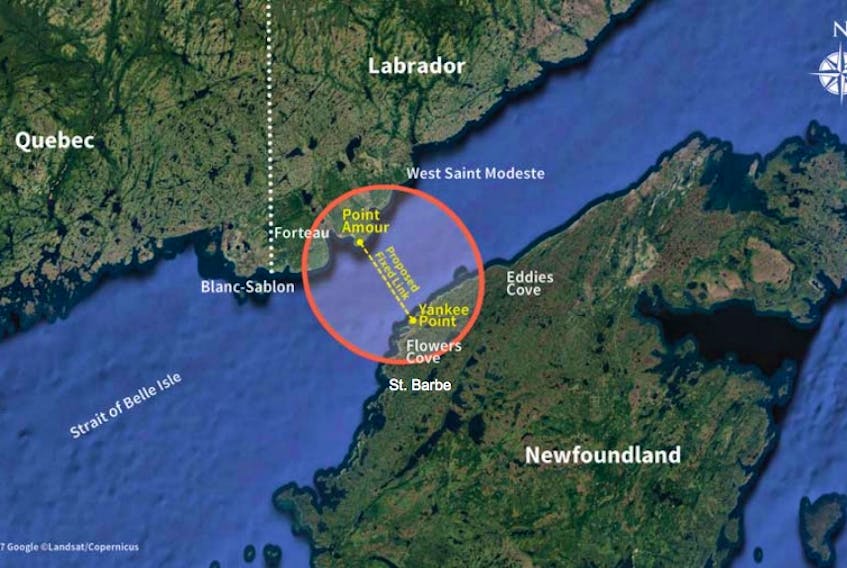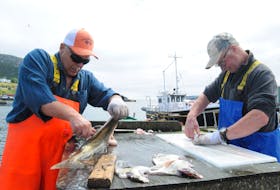A subsea tunnel across the Strait of Belle Isle is back in conversation once again after a report was tabled this month in Ottawa.
The federal government’s standing committee on transport, infrastructure, and communities is now calling on the federal government to work with the provinces of Newfoundland and Labrador and Quebec, as well, as the private sector, to build a fixed link across the Strait of Belle Isle and complete Route 138 along the Quebec Lower North Shore.
The tunnel would link Point Amour in Labrador to Yankee Point on the Great Northern Peninsula in Newfoundland.
The project would permanently connect the island of Newfoundland to the rest of Canada by road.
Churence Rogers, MP for Bonavista-Burin-Trinity, presented the two recommendations, from the committee’s Canadian Transportation and Logistics Strategy – Part 2 report to the House of Commons on June 14.
The report focused on transportation in Eastern Canada.
Rogers, the only Newfoundland and Labrador MP on the committee, believes it is an important preliminary step in initiating dialogue between the federal and provincial governments.
“We’re not saying what the next step should be,” he told The Northern Pen. “We’re saying the government of Canada should work with the province of Quebec and the province of Newfoundland and Labrador towards putting in place a plan to connect (route) 138 to the Trans-Labrador Highway and to start plans to try to link up (Newfoundland and Labrador) through a tunnel of some kind.”
Rogers believes it would be a “nation-building” project.
“It would open our province to major traffic flow from mainland Canada and the eastern seaboard,” he said. “It would open up a lot of economic development opportunities, probably create a much greater tourism market.”
He notes the dependence on ferries have also led to frequent delays, particularly due to ice and wind in the winter and spring.
Rogers adds that the report is not particularly detailed but, rather it exists to initiate conversation.
The standing committee gathered its information speaking with local witnesses, who testified to the need of a fixed link across the Strait of Belle Isle.
Danny Dumaresque, owner of Labrador Gem Seafoods, and a native of L’Anse au Clair, located in the Labrador Straits, was one of the witnesses.
He has been a long-time advocate for a fixed link.
Dumaresque says he has visited and spoken directly with engineers in Norway – a country that has 33 subsea tunnels – experienced with tunnel construction.
Based on those discussions, Dumaresque estimates a Strait of Belle Isle tunnel would cost approximately $800 million.
He provided this information to the standing committee. However, it contradicts some findings from the Government of Newfoundland and Labrador’s pre-feasibility study released spring 2018. That study, completed by consulting company Hatch and the Harris Centre at Memorial University, recommended a rail link tunnel at a cost of $1.65 billion.
Dumaresque criticized the province’s findings, calling the number “foolish.”
He believes the province should consult with engineering companies instead of academic researchers to determine the cost (Hatch is an engineering consultant).
“If you want to know the cost of a tunnel, don’t ask the university or any other academic; prepare a request for proposals which will define the parameters of your tunnel and put it out to the people who build tunnels and say, ‘give me your price,’” he told The Northern Pen.
Rogers was familiar with the discrepancy but trusted the information provided by Dumaresque, citing the experience of the Norwegians.
“Danny’s numbers are based on what the people of Norway are doing, and they’ve got a lot of expertise and are doing this on a regular basis,” said Rogers. “It’s not like this is their first or second tunnel.”
Contrary to the pre-feasibility study, Dumaresque also dislikes the idea of a rail tunnel.
“It’s a subsea road tunnel (in Norway), there was nothing about this foolish rail tunnel – that’s absolute foolishness,” he said.
Next steps
Rogers says the report will now be sent to Transport Canada, where it will be reviewed by Minister Marc Garneau and department officials.
The committee anticipates a comprehensive response from the department.
Given the number of recommendations within the report, Rogers does not anticipate there will be a response issued until after the next federal election later this year.
Meanwhile, the provincial government, after completing its pre-feasibility study last year, still intends to go ahead with a full feasibility study on a fixed link, at a cost of up to $23 million.
"A fixed link project would need considerable investment and time to complete," a spokesperson for the Department of Transportation and Works wrote to The Northern Pen. "We intend to complete a full feasibility study and will work with the governments of Quebec and Canada to complete the study."
The department spokesperson also confirmed that Minister Steve Crocker was in Ottawa earlier this year to discuss the project with Quebec Minister of Transport François Bonnardel.
They did not specify when the full-feasibility study would commence.
The Standing Committee report can be viewed online here.









